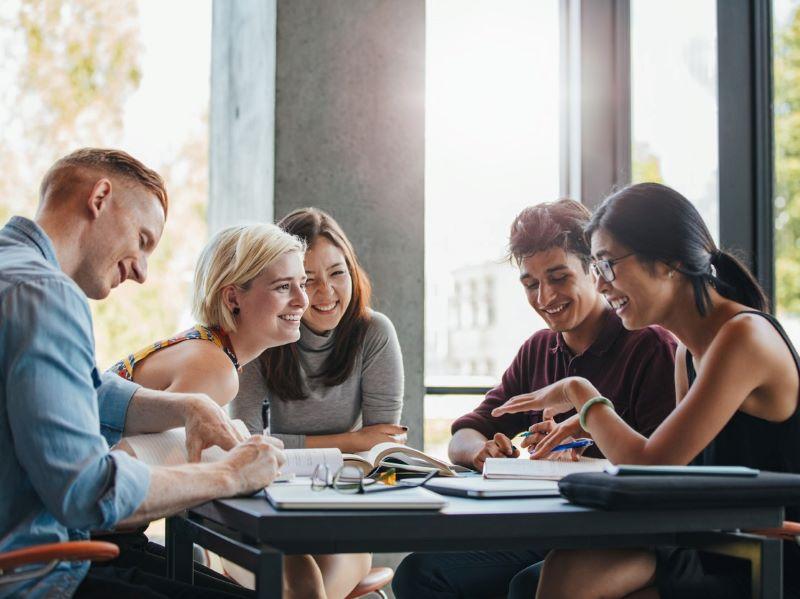
Building the future: the case for inter-faculty learning
Interdisciplinarity
Sponsored by

Advice for bringing together multiple academic disciplines into one project or approach, examples of interdisciplinary collaboration done well and how to put interdisciplinarity into practice in research, teaching, leadership and impact

The return to campus has been well documented as important in the post-disaster recovery period. And certainly, after several years of disruption to education, it has been exciting and cathartic to see university campuses full of students and the vibrancy of connections, especially when we know that young people have been prevented from partaking in various rites of passage and could be struggling to develop relationships and learn vital interpersonal skills.
Nonetheless, Hepi and the Office for Students have noted that we still have to give students a reason to attend in person and cannot pivot back to pre-pandemic learning. We must instead take a holistic approach to the student experience, use of space on campus and learning. Matt Riddle of Hepi states: “Universities need a plan that puts emphasis on the value of the learning experience. With many lecture halls standing empty, universities need to think about how they earn the commute. This means not only giving learners a sense of belonging and community but also designing learner experiences around the things that make an on-campus experience distinctive.”
As a criminologist and an engineer, we use the campus and its physical spaces in very different ways. In online meetings during lockdowns, we recognised the value of, and longed for, physical place and in-person teaching. We decided to launch an innovative inter-faculty way of working to provide students with an excellent student experience. We had each wanted to work in a cross-faculty way and randomly finding one another led to this being born. After all, there is so much that different disciplines can offer each other; sometimes you just need to give it a go.
- The challenges of creating a multidisciplinary research centre and how to overcome them
- Interdisciplinarity in teaching: what it is and how to make it work
- Spotlight guide: A focus on interdisciplinarity in teaching
We each run a capstone module for final-year students, one being an alternative dissertation in the social sciences and the other an engineering dissertation module. As part of our new, inter-faculty way of working, both the engineering and social science students are given three-minute pitches on projects related to the development and implementation of innovative engineering products or systems. Some examples are accessible cycles, solar power refrigeration, a circular economy for campus plastic waste, or urban wind energy. Students then join teams, with the engineers learning industry-standard system development skills and the social science students there to provide consultation, scoping out of the related literature, research questions, ethical considerations and identifying concerns relating to gender, race, class, disability, age, etc.
One of the projects of particular interest to our sustainability agenda is our campus circular economy, where we recycle plastic waste into new products for sale in our university shops. Not only is this giving students a real-world problem and allowing them to devise a strategy to solve it, but students working inter-faculty will imagine completely new ways to frame the issue by utilising their different skill sets and building something new.
The modules we have designed for the project are committed to the Liverpool Curriculum Framework, spanning all of its seven strands: inclusivity; research-led learning; active learning; authentic assessments; confidence; digital fluency; and global citizenship. They also provide students with the ability to make friends and colleagues from across the university, give them a physical space to do this and encourage them to develop key personal and professional skills. The students learn through a mixture of lectures, group supervision, peer-led meetings, careers-led sessions and off-site opportunities. They also have the chance to collaborate with industry partners globally.
Over the past three years students have had limited opportunities to meet new people and develop their confidence. We wanted to provide them with incentives to develop their people skills and be exposed to new ways of thinking from peers they were otherwise unlikely to meet. We must also understand the student experience in the context of the cost-of-living crisis, with many people unable to afford socialising.
Being able to confidently communicate with those outside your field is a key employability skill, and using enquiry-based learning in this way involves developing and nurturing relationships and negotiating aspects of project work. Students are expected to manage their own projects, show leadership and creativity, influence others through collaboration and take risks. They develop resilience, independence and the ability to think outside the box. They are also asked to show what went wrong, in addition to their successes, which helps normalise failure, with all the positives that can entail.
Our modules are owned by our respective faculties with our own learning outcomes and assessments, and yet the projects collide. Students from each faculty provide consultation, support and feedback to their colleagues and peers and log this continuously to an industry standard. The project helps provide students with academic knowledge, personal development and the competencies and skills that are needed in professional life, which, in turn, can help address inequalities in graduate employment.
To make such a project happen, you will need to start with a tangible issue that needs solving; students need to see a real-world problem. Matt is chair of our Education in Sustainable Development group, and Gemma is a faculty rep for the group, thus all our options in this project centre around sustainability. Identify interested stakeholders within your department, school, faculty and institution and have conversations with your education leads. Think about practicalities such as timetabling needs and other potential obstacles to inter-faculty working. Communication is key, both among academic colleagues and students. This way of working can be challenging, and it is important that students are supported throughout by regular timetabled group supervisions.
We have had interest in this way of working from other disciplines, faculties and colleagues nationally and are happy to be contacted by any interested parties.
Gemma Ahearne is a lecturer in criminology and Matt Murphy is a senior lecturer in engineering, both at the University of Liverpool, UK.
If you found this interesting and want advice and insight from academics and university staff delivered direct to your inbox each week, sign up for the THE Campus newsletter.
Interdisciplinarity
Sponsored by


